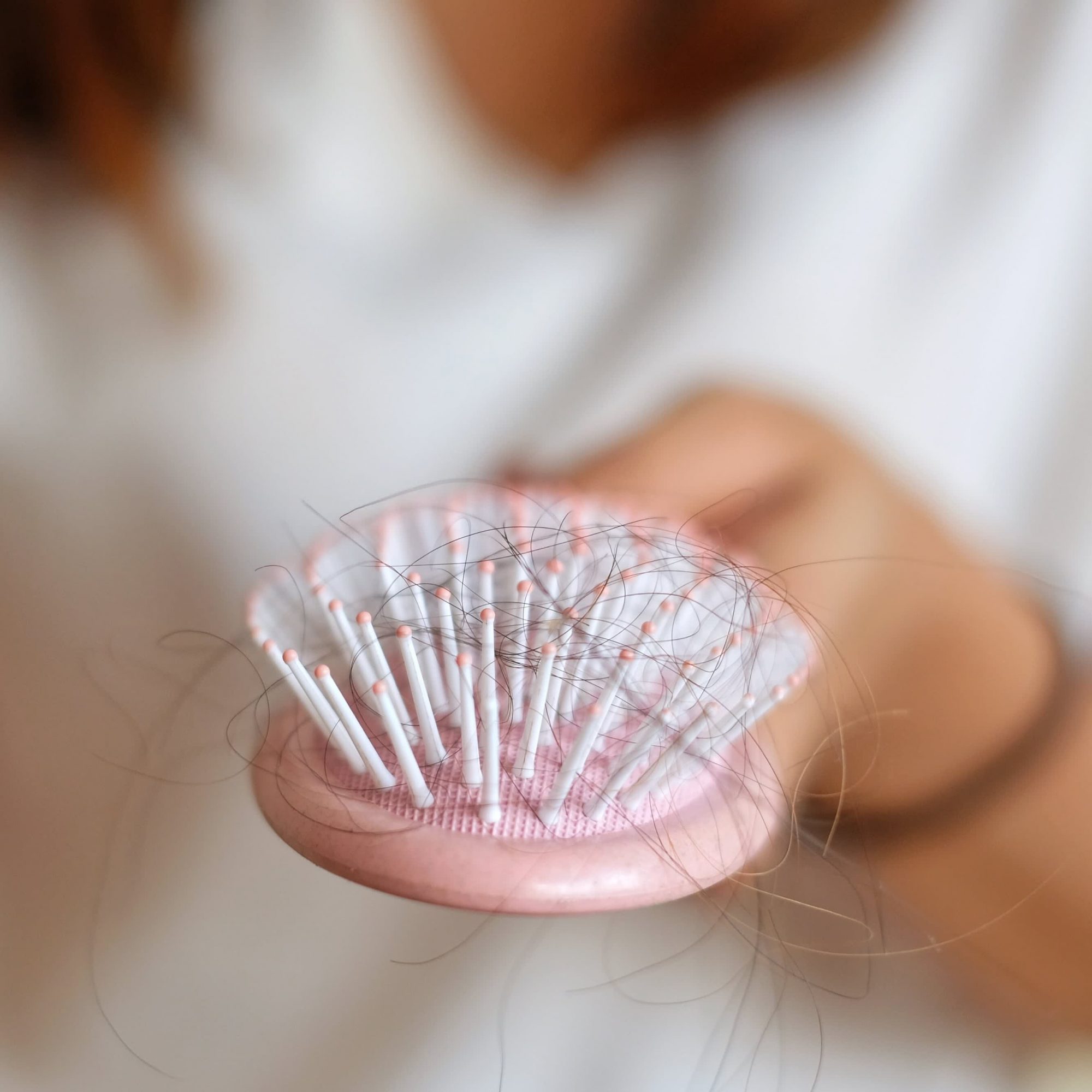
- POPSUGAR Australia
- Beauty
- Yes, People Are Reportedly Losing Hair Due to Stress From the Pandemic
Yes, People Are Reportedly Losing Hair Due to Stress From the Pandemic

As the year progresses and the novel coronavirus continues to upend everyday life, there’s still a lot more we’re learning about the virus and its side effects. For example, recent research has shown that hair loss is common among those who have recovered from the virus – even actress Alyssa Milano revealed via Twitter that her hair has been falling out in clumps following her experience with COVID-19 – though it also appears to be a common experience among those who haven’t contracted the virus but are affected by the stress of the pandemic directly.
“We’re living in a superstressful time, and that can lead to [potentially] losing more hair.”
“I’m based in California, so the reopening of our salons has been a slower process than most states,” celebrity hairstylist Carrera Alvarez told POPSUGAR. “One thing I’m hearing from my clients is concern about hair loss from stress, which is very real. We’re living in a super stressful time, and that can lead to [potentially] losing more hair.”
This type of hair loss is known as telogen effluvium, which, as a previous POPSUGAR article says, is “caused by physiologic stress to the body following conditions like anemia, low iron, surgery, general anesthesia, changes in hormones, or others.” It’s essentially stress-related hair loss, and it happens when the hair is pushed into the resting phase but doesn’t enter the growth phase following a highly stressful event. “Anything that your body deems a stress – physical or psychological – will cause a person to develop a telogen effluvium,” dermatologist Sapna Palep, MD, told POPSUGAR.
Dr. Palep has experienced telogen effluvium five times so far; two of them occurred after giving birth, while the others happened after three separate stressful events. According to her, most stress-related hair loss can linger for up to six months following whatever triggered it and can take up to one full year for the hair to recover. The good news is that this type of hair loss is usually temporary and can be treated with topical products and in-office procedures.
“In my office, I treat patients with hair loss with PRP (platelet-rich plasma) therapy, which uses injections of a concentration of a patient’s own platelets to restore and accelerate hair growth,” Dr. Palep said. “Treatments are done once a month for three months and every six months thereafter for maintenance. It’s highly effective, and I’ve undergone PRP therapy myself for my hair loss.”
If PRP isn’t as accessible for you, both Alvarez and Dr. Palep have alternative hair-loss treatments they’d recommend turning to. “My go-to is Nioxin. It’s the number one brand for thinning hair and known globally as a trusted brand,” Alvarez said. “I start [my clients] on a System Kit to create a solid foundation for healthy growing hair.” Meanwhile, Dr. Palep is a big fan of Nutrafol and the results it’s been proven to show.
“I think it has a unique grouping of ingredients compared to its competitors,” she said. For topical therapy, though, Dr. Palep recommends using Midoxil. “It’s available without a prescription as a two percent solution, a five percent solution, and a five percent foam,” she said. “I typically recommend five percent because studies support that it has somewhat greater efficacy. It works by increasing the window of time that a hair follicle is in its anagen (growth) phase, shortening the window of the telogen (resting/nongrowing) phase, and enlarging miniaturized follicles.”

